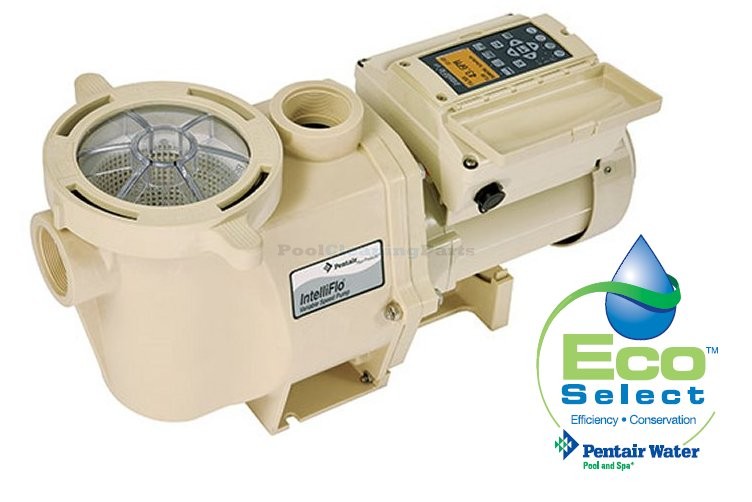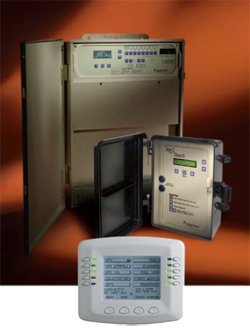Quality Pool Pumps
The benefits of a two-speed pump have to be seen to be believed. It just makes way too much sense to be ignored.
The two-speed pump addresses the biggest concerns that pool owners have about their pumps, that being cost of operation and quietness of operation. Energy efficiency is a big issue with consumers and with power companies these days.
 Consider the following real-life comparison:
Consider the following real-life comparison:
This 12,000-gallon pool has a normal 1.5 HP pool pump. It runs for 8 hours per day. It pumps about 80 gallons per minute, which means that it circulates 38,400 gallons each day. The pump draws 9.0 amps at 240 volts. At a cost of 14 cents per kilowatt hour, that translates to a cost of $2.24 per day or $67.20 per month to operate the pool.
This 12,000-gallon pool has a two-speed 1.5 HP pool pump. It runs 12 hours per day at low speed. At low speed, it pumps about 40 gallons per minute which means that it circulates 28,800 gallons each day. The pump draws 2.25 amps at 240 volts at low speed. At a cost of 14 cents per kilowatt hour, that translates to a cost of $0.49 per day or $14.70 per month to operate the pool.
The benefits of a two speed pump have to be seen to be believed. It just makes way too much sense to be ignored.
The two-speed pump addresses the biggest concerns that pool owners have about their pumps, that being cost of operation and quietness of operation. Energy efficiency is a big issue with consumers and with power companies these days.
Consider the following real-life comparison:
This 12,000 gallon pool has a normal 1.5 HP pool pump. It runs 8 hours per day. It pumps about 80 gallons per minute, which means that it circulates 38,400 gallons each day. The pump draws 9.0 amps at 240 volts. At a cost of 14 cents per kilowatt hour, that translates to a cost of $2.24 per day or $67.20 per month to operate the pool.
This 12,000 gallon pool has a two speed 1.5 HP pool pump. It runs 12 hours per day in low speed. In low speed it pumps about 40 gallons per minute which means that it circulates 28,800 gallons each day. The pump draws 2.25 amps at 240 volts in low speed. At a cost of 14 cents per kilowatt hour, that translates to a cost of $0.49 per day or $14.70 per month to operate the pool. <–>
Variable Speed Pumps (energy saver)
Why variable speed pump? Watch this interesting video that explains the difference between variable-speed pump and a conventional single-speed pump. The cost savings are unbelievable. Enough that the savings would easily pay for the pump costs in a very short time.
Discover the energy cost savings possible with revolutionary IntelliFlo® and IntelliPro® intelligent, variable-speed pumps from Pentair.

How much is a 30 % to 90% energy reduction worth to you?
Since the cost to operate your pool pump isn’t itemized on your electric bill, you’re probably wondering just how much an IntelliF lo could save. Here are realistic estimates when comparing a traditional energy efficient (EE), single-speed pump to IntelliFlo in a 20,000 gallon pool. Savings are calculated using 6 and 12 hours of operation, which represent common run times.
Why I am not just cutting back running time?

The pump is what circulates the water in your swimming pool, allowing the filtration system to clean debris and other contaminants from the water. This water circulation also ensures that the chemical and oxygen levels remain consistent throughout the swimming pool, making it more difficult for organisms such as algae to gather and thrive. If your swimming pool pump is not working effectively, water will stagnate, making it harder to maintain optimum water clarity and condition.
According to the National Swimming Pool Foundation (NSPF) a turnover time of 6-8 hours for residential pool is standard.
